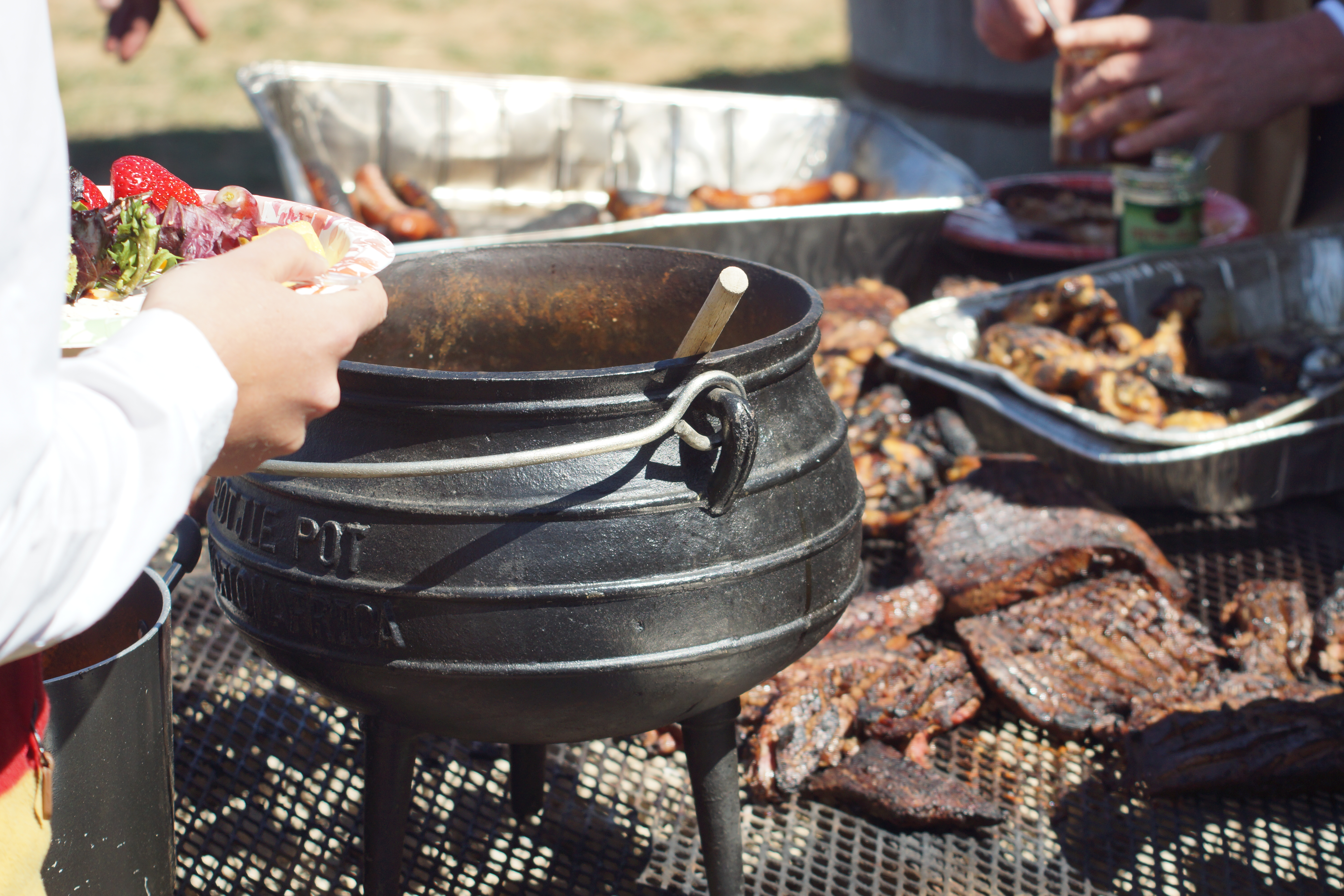From Wikipedia, the free encyclopedia
A typical braai on a small braaier
The word braai (plural braaie) is Afrikaans for “barbecue” or “grill” and is a social custom in Botswana, South Africa, Namibia, Lesotho, Zimbabwe and Zambia. The term originated with the Afrikaner people,[1] but has since been adopted by South Africans of many ethnic backgrounds. The word vleis is Afrikaans for “meat”.
The word has been adopted by English-speaking South Africans and can be regarded as another word for barbecue, in that it serves as a verb when describing how food is cooked and a noun when describing the cooking equipment, such as a grill.[1] The traditions around a braai can be considerably different from a barbecue, however, even if the method of food preparation is very similar.
While wood formerly was the most widely-used braai fuel, in modern times the use of charcoal has increased due to its convenience, as with barbecues elsewhere in the world. There has however been a renewed interest in the use of wood after the South African government started with its invasive plant species removal program. An important distinction between a braai and a barbecue used to be that it was fairly uncommon for a braai to use gas rather than an open flame. However, over the last few years, mainly for the sake of the convenience it offers, many household own a gas braai together with a wood or coal braai. Of course open flames remain remain the favourite for braais away from home.
Boerewors and pork in a concrete braai structure.
Similar to a potluck party, this is a social event which is casual and laid-back, where family and friends converge on a picnic spot or someone’s home (normally the garden or verandah) with their own meat, salad, or side dish in hand. Meats are the star of the South African braai. They typically include boerewors, sosaties, kebabs, marinated chicken, pork and lamb chops, steaks, sausages of different flavors and thickness, and possibly even a rack or two of spareribs. Fish and Rock Lobster commonly called “crayfish” or kreef in Afrikaans, are also popular in coastal areas.
The other main part of the meal in some regions of the country is pap (pronounced /ˈpɑːp/, meaning porridge), actually a thickened porridge, or the krummelpap (“crumb porridge”), traditionally eaten with the meat. Made from finely ground corn/maize (similar to polenta), it is a staple of local African communities and may be eaten with a tomato and onion sauce, monkeygland sauce or the more spicy chakalaka at a braai. Alternatively Braaibrood is made.
Sometimes this activity is also known as a “dop en tjop” (dop being Afrikaans slang for an alcoholic drink, literally meaning “cap” or “bottle top”, and “tjop” being the informal Afrikaans term for lambchop) when more alcohol than the odd beer is involved.
The polo players foxhunters braai article as featured in Covertside


Leave A Comment
You must be logged in to post a comment.